If you’ve ever strolled through Paris’s public gardens, you may well have stopped to take a seat on its outdoor furniture: green chairs and loungers scattered around fountains and flower beds. Any time the sun comes out, residents and tourists quickly take to the park, where patio furniture is arranged around a table for a group picnic or under a tree for a quiet nap in the shade. On a sunny day it can be difficult to find a free seat – they’re all taken by sunbathers.
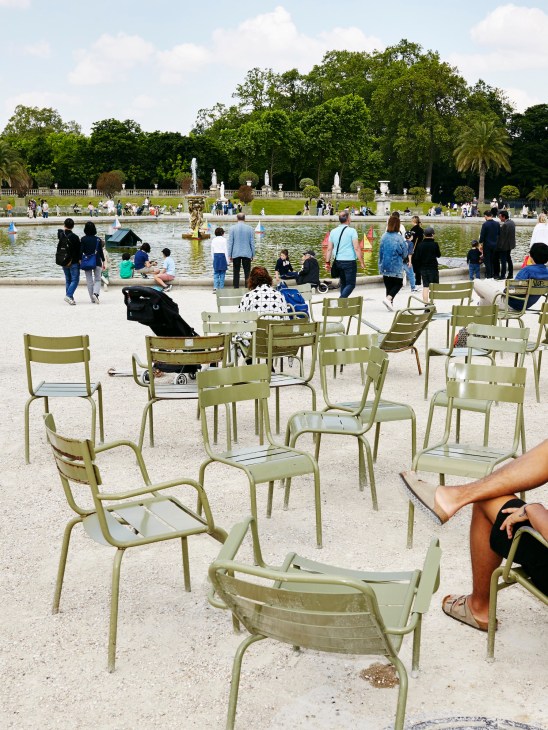
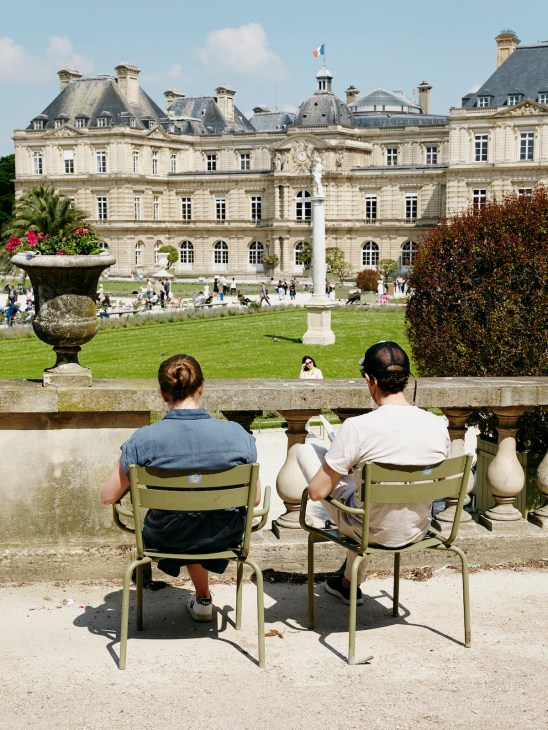
Along with the Wallace drinking fountains, the rattan chairs lining café terraces or the iconic dark-green kiosks commissioned by Baron Haussmann in the mid-19th century, the chairs found in Parisian parks and gardens have become a symbol of the city. The sturdy, stylish outdoor furniture, which subliminally transmits a sense of Paris to millions of visitors, comes from a few trusted companies. One of the biggest suppliers is French manufacturer Fermob, whose chairs can be found in the Luxembourg Gardens, as well as on café terraces, squares and the banks of the Seine.
The idea to add lounge chairs to the Luxembourg Gardens was first proposed in 1843 by the French senate, which is housed in the Luxembourg Palace and still owns the green space and its tennis courts. It took until the 1920s for the first collection of chairs, made by the craftspeople at city hall’s Ateliers de la Ville de Paris, to arrive. In the 1990s, Fermob won a competition to produce a modern version and, in 2004, the company called on French designer Frédéric Sofia to redesign the seats in aluminium, making them lighter, more comfortable and easily collected and stacked.
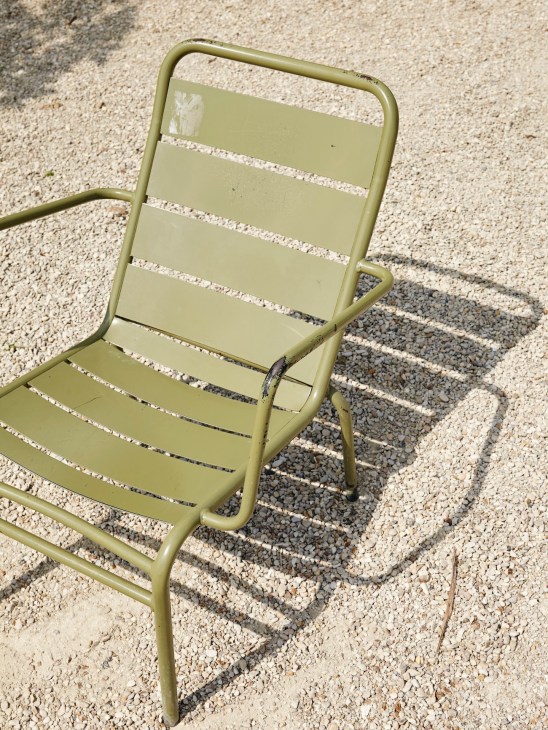

The resulting sage-green “Luxembourg” collection (originally named Sénat) has since become synonymous with the Parisian park. “Our furniture creates a sense of connection,” says Fermob’s chairman, Bernard Reybier. “It’s recognisable and part of daily life and makes people feel that they are in a very Parisian setting. The idea is that you are part of the history of the city.”
Founded in 1890 in Thoissey by a family of blacksmiths, Fermob takes its name from the words fer (“iron”) and mobilier (“furniture”). It remained a small workshop until it was acquired in 1989 by Reybier, who oversaw the growth of the company and expanded its appeal by collaborating with designers such as Pascal Mourgue, Andrée Putman and Matali Crasset. Today the business has expanded greatly but all of its manufacturing still takes place in the Ain region north of Lyon.
Despite its production beyond the city, Fermob’s relationship will always be close with Paris – and it’s continuing to evolve. Last year the firm began furnishing another Parisian landmark, the Champs-Elysées, as part of a project to transform the avenue into a pedestrian-friendly garden by 2030. The Committee for the Champs-Élysées asked Fermob, along with other bistro-furniture manufacturers, to design a new chair for its café and restaurant terraces. “What people like best is a product that has both a good design and a history to go with it,” says Reybier. “The Champs-Élysées is a new story and we will see where it takes us. Maybe it will also become representative of the Parisian identity.”
Click here to enjoy Monocle’s full city guide to Paris
Unicef recently published a list of the best countries in which to be a child. The Netherlands placed first. Denmark, my adopted homeland, came in second. Copenhagen certainly scores well on the “popsicle test”, which assesses the safety of a place according to whether an eight-year-old can walk to a shop on their own, buy a lolly and return home safely. I know families in Copenhagen whose children have roamed freely around the city centre from the age of six. Danish children enjoy wonderful freedoms and protections, and are indulged by city planners. It’s hard to argue against any of this but I have begun to wonder: can a society shift too far in favour of the youngest generation?
I recently walked around Copenhagen’s new Opera Park with its architect, Maj Wiwe. Since opening in 2023, Opera Park has become my favourite public space in the city but I had never really thought about why until Wiwe drew my attention to the absence of children. There’s no programming for them. There are no playgrounds or areas for ball games; no climbing walls, basketball courts or shallow boating ponds; no signs with cartoon characters on them; no cuddly mascots encouraging you to pick up your litter.

Wiwe said that she had designed the park for adult pursuits, such as gazing at spring blossoms, reading a book in a shady corner or getting mildly drunk on a summer’s evening. Seeing my children grow up in Copenhagen has made me realise that Danish children are cosseted in many ways. The country’s one-size-fits-all state-school system has a laudable emphasis on supporting lower-achieving pupils but it often comes at the cost of the academically ambitious. Competitiveness is generally discouraged and the limelight is meant to be shared. I once sat, bewildered, at a school production of Treasure Island, until it was pointed out to me during the interval that every child in my son’s class was being given the chance to play one of the main characters through scene-by-scene rotation. It’s a strange paradox: Danish children are extraordinarily free, except to succeed or fail.
Visiting the Opera Park with its designer made me realise the extent to which most other public spaces in the Danish capital are sacrificed in order to keep children amused or distracted. Perhaps the adults have gone along with it because we ourselves have become so infantilised. We dress like children in sportswear and trainers. We play computer games, read Harry Potter and wait patiently outside multiplexes for the latest Marvel film. Instagram encourages us to eat under-10s’ birthday-party food. We drive cartoonish cars and play padel instead of tennis. And don’t get me started on grown men on skateboards.
Copenhagen’s Opera Park offers a compelling alternative approach to urban spaces, with fewer swings and rubberised safety surfaces, and more contemplative oases – quiet corners of the city in which to read a book or flirt. Who knows? If we show our children more mature ways in which to live in the city, we might begin to raise more robust grown-ups.
Michael Booth is Monocle’s Copenhagen correspondent.
Illustrator: Pete Ryan
They make beautiful landscapes, places where office workers devouring their lunchtime sandwiches can be surrounded by buzzing bees and chirping birds. But there’s a lot more than that behind the making of any project by Los Angeles and San Francisco-based Terremoto. This company is underpinned by a considered, radical manifesto that’s out to challenge how landscape architecture works – and even what its remit should be.
Just take this from what reads like a declaration of independence from the rest of their trade (as posted on their website): “We gnaw on the bones of modern and postmodern landscapes alike and consider new, inverted futures for the baroque and the picturesque. We pillage the tattered fuselage of worlds East and West. We have no particular identifiable style, because beauty is diverse, and because ‘having a particular style’ sounds very boring.” I don’t think they are planning to visit the Chelsea Flower Show.
One of the team’s recent projects is Denver 17th Street Corner Plaza, a privately owned but publicly accessible space. Here, surrounded by skyscrapers, they have made a curvy garden with large trees, giant boulders, chunky wood benches and grasses that move with the breeze. A slice of rewilding in the downtown.
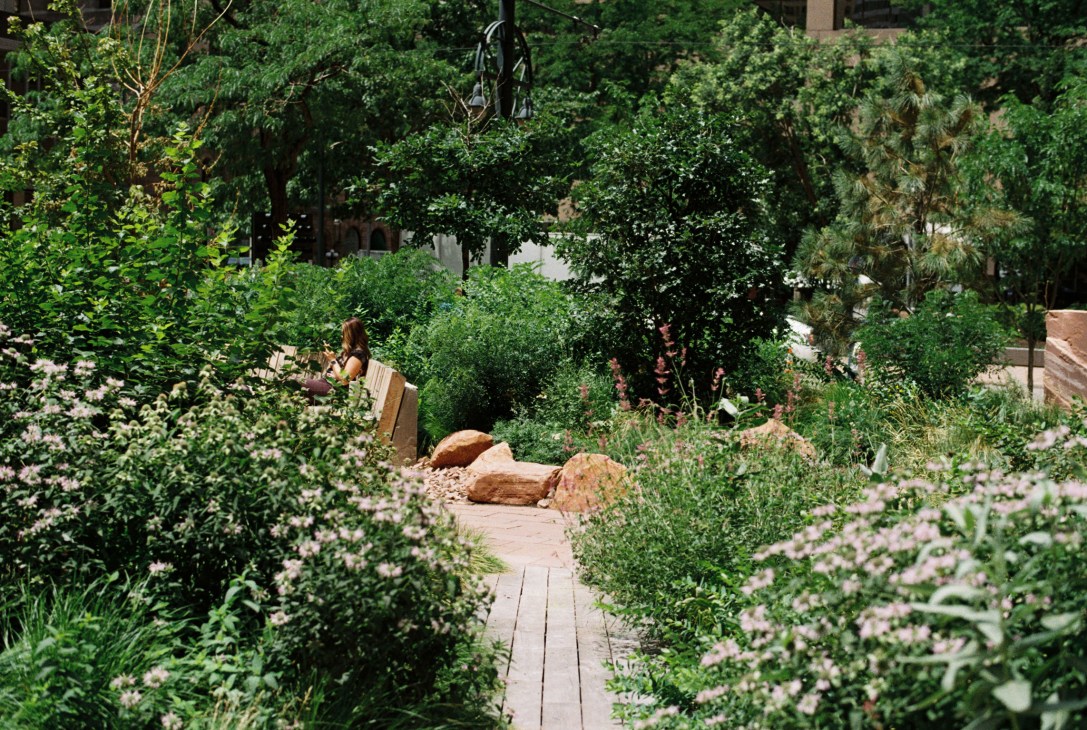
David Godshall, a principal at Terremoto, is one of its creators and while content with the outcome he also underlines why there won’t be too many more schemes such as this in the portfolio. Because that’s the first thing that’s wrong with landscape architecture: its practitioners unwisely stray too far. “We believe that landscape architects and landscape designers should mostly be local. I say that because landscape making is inescapably regional. And if you were to take me and put me somewhere else in Europe, for example, I probably wouldn’t be very good at my job. We believe that landscapes should be by, of and for, the creatures and communities that they serve.”
The Denver project came in through a side door – the client was someone that they had worked with before, from closer to home. To safeguard both the site and their beliefs, they trod with care, questioning every move. They started by focusing on the sourcing of local materials because, as Godshall says, “It seems like good logic to us that, in order to keep the carbon footprint of our projects light, the materials should come from nearby. We mostly move stuff around in the US on the backs of big trucks, and the fewer trucks driving around, the lighter the carbon footprint of the project. Interestingly, taking this approach also inescapably imbues a project with a sense of regionalism.” And there’s another added consequence – this helps support local businesses, including plant growers, quarries and timber mills.
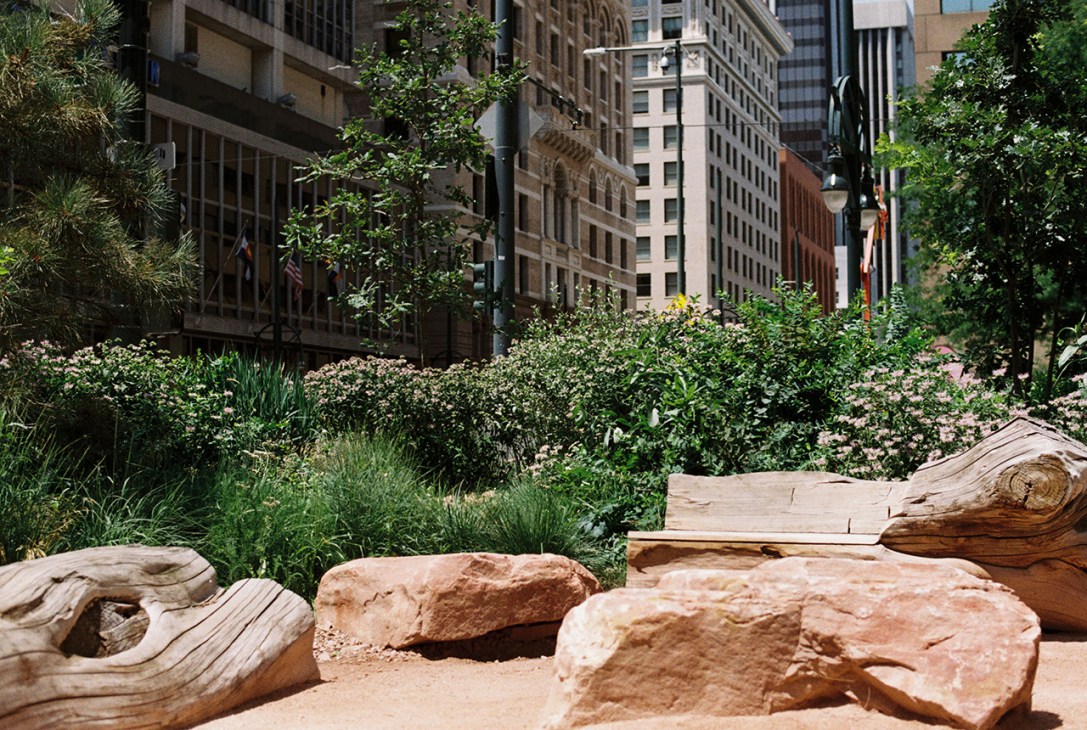

Godshall is at pains to ensure that everyone involved in the making of the Denver project is given credit. And, I mean, everyone. One of Terremoto’s other manifesto-like pledges is to shine the light on the people who actually build their landscapes – the labourers who haul the giant rocks into position, lug bags of soil around. He explains: “The making invisible of the contribution of the labourer – that’s mostly done in the mainstream perspective – is either passive, systemic racism or classism. Hiding the contributions of the mostly Latino or Latinx men who build the landscapes that we make in California seems to be quietly problematic to us.”
Godshall is eloquent, measured (and, yes, I am sure that all his colleagues are too) and Terremoto – “earthquake” in Spanish – clearly has both the ambition and potential to shake up the world of landscape design. But luckily, its work is more than just polemic, it’s also about beautiful, wild, nature-embracing landscapes that people respond to. These are not crappy community gardens made from abandoned pallets.
I ask Godshall if he’s happy with the outcome, how people are using the benches and locating spots to linger (before answering, he stresses Terremoto’s opposition to trying to control what people do in a landscape – an American problem, he believes). “We have learned that the needs of an office worker are not that wildly different from the needs of say, a honeybee or a butterfly or a bird, in that what we mostly want is to be able to be outside, to enjoy the environment, have a sip of water and commune with nature,” he says. In short, if you want to savour your burger in the sun without a side order of manifesto – he’ll leave you alone.
To hear Monocle’s full interview with Terremoto’s David Godshall, listen to ‘The Urbanist’ , below:


